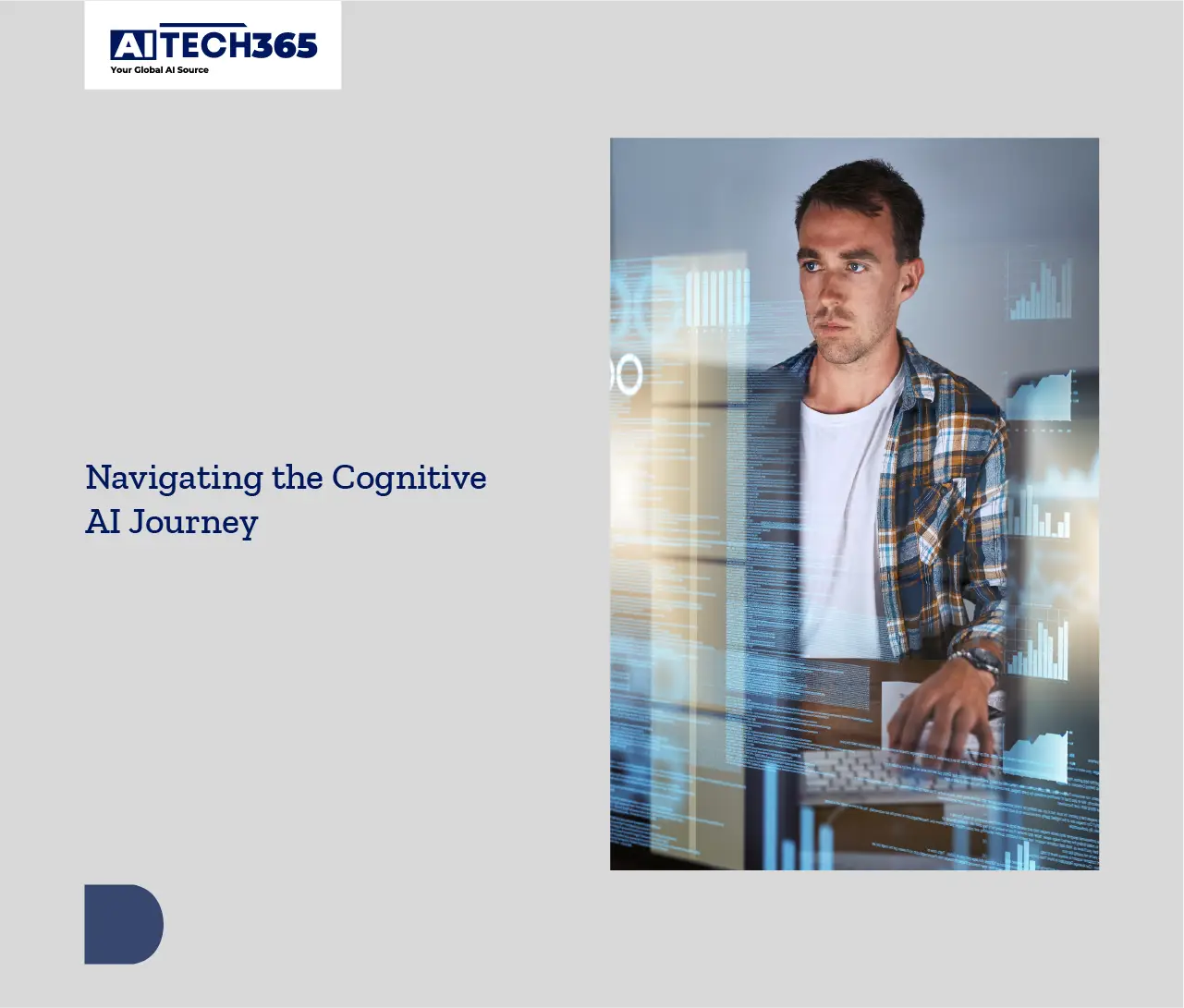For decades, the heartbeat of IT Operations (ITOps) has been fundamentally reactive. Alarms blare, tickets pile up, and teams rush, digital heroes fighting constant fires. Downtime hits, users shout, and the rush to fix the issue starts. This often costs businesses a lot and hurts their reputations. Automation and basic monitoring tools helped a bit. However, they mostly stuck to fixed rules and limits. They struggled with the size, complexity, and shifting nature of today’s hybrid and multi-cloud environments. True proactive IT promises to spot issues before they affect users. It aims to optimize resources smoothly and provide perfect digital experiences. Yet, this goal still feels out of reach. Until now. Cognitive AI is changing ITOps. It shifts our focus from fixing problems after they occur to predicting and preventing them before they happen.
Cognitive AI represents a significant leap beyond traditional automation and even rule-based AI. It’s not just about doing tasks quicker or spotting problems with fixed limits. It’s about giving systems skills that act like human thinking. This means grasping context, gaining knowledge over time, tackling difficult problems, and making smart predictions. This change from doing to thinking is what transforms ITOps. It turns ITOps from a cost center into a key player for business resilience and innovation.
The Crumbling Foundations of Reactive ITOps
The limitations of the reactive model are starkly evident. Teams get overwhelmed by alerts, most of which are just noise or false positives. This leads to alert fatigue and causes them to miss important signals. Alert fatigue is a serious issue, PagerDuty’s 2024 State of Digital Operations survey reveals that teams are overwhelmed by constant noise, significantly impairing their effectiveness and well-being. Diagnosing issues is hard work. You need to carefully check different data sources, such as logs, metrics, traces, and tickets. This process is often compared to finding a needle in a haystack, especially when the haystack is on fire. MTTR can be a tough metric. It affects customer satisfaction, employee productivity, and revenue directly. Also, resource optimization is often a guessing game. This can cause over-provisioning, which wastes money. It can also lead to under-provisioning, risking performance issues. Constant firefighting offers no space for strategy or innovation. It keeps IT talent stuck in a cycle of tedious operations.
Cognitive AI Which is the Engine of Proactive Intelligence
Cognitive AI adds deep intelligence to ITOps platforms. It goes beyond just spotting patterns. Here’s how its core capabilities enable the proactive revolution:
- Contextual Awareness & Understanding: This is the bedrock. Cognitive systems gather and combine data from many sources. They use infrastructure metrics, application logs, and network traces. They also look at historical tickets and CMDB records. External factors, like weather or regional events, are included too. Crucially, they understand the relationships between these entities. Service A depends on Database Cluster B. This cluster runs on Virtual Machines C and D. These VMs connect via Network Path E. An issue with VM D is not isolated. It’s linked to how it might affect Service A and the business processes it supports. This contextual map transforms noise into signal.
- Continuous Learning & Adaptation: Unlike static rules, cognitive systems learn perpetually. They use advanced machine learning (ML) methods, especially unsupervised and deep learning. This helps them set dynamic baselines for ‘normal’ behavior for each component and service. These baselines evolve as systems change, new deployments, patches, seasonal traffic patterns. The AI spots small changes that threshold-based systems miss. It learns from past events to improve its grasp of cause and effect. It adapts to the unique fingerprint of your environment.
- Causal Reasoning & Prediction: This is where true proactivity emerges. Cognitive AI doesn’t just spot anomalies; it reasons about them. It examines event sequences and connects symptoms on the map. Then, it uses learned knowledge to find the likely root cause of problems. More powerfully, it can predict future incidents. The system can spot patterns that usually cause outages or slowdowns. A specific memory leak pattern can predict issues. Longer transaction delays and full storage also indicate problems. This means it can warn us hours or even days ahead of time. This moves the focus from ‘Something is wrong NOW!’ to ‘This will likely go wrong SOON if unaddressed.’
- Intelligent Prescription & Automation: Knowing the ‘what’ and ‘why’ is only half the battle. Cognitive AI progresses to the ‘how to fix it.’ It can recommend specific actions based on its reasoning. It might suggest:
- Restarting a service
- Failing over a cluster
- Scaling resources
- Rolling back a deployment
Crucially, these recommendations are contextual, considering dependencies and potential side effects. Mature cognitive platforms can automate these actions safely. This gives them self-healing abilities for known situations. As a result, they significantly lower MTTR and reduce the need for human help with routine fixes.
The Tangible Benefits
Cognitive AI brings clear, measurable benefits to the ITOps spectrum:
- Predictive Problem Prevention: The holy grail. By identifying and resolving issues before they cause user impact, unplanned downtime plummets. Picture stopping the e-commerce checkout crash at peak sales. Also, think about dodging the CRM failure before the quarterly review. Gartner expects that by 2026, approximately 30% of enterprises will automate more than half of network activities using AI and hyperautomation, reducing outages proactively.
- Radically Accelerated Resolution: When incidents do occur, cognitive AI slashes MTTR. Instantaneous root cause identification eliminates hours of manual investigation. Automated remediation handles known issues in minutes. A global financial services firm reduced MTTR for key application incidents by over 50%. This improvement came just months after they started using a cognitive AIOps platform. As a result, they preserved revenue and maintained customer trust.
- Optimized Resource Utilization & Cost: Cognitive AI gives clear insights into how resources are used. It also predicts future demand accurately. This allows for accurate right-sizing of cloud and on-premises resources. It cuts down on wasteful over-provisioning and stops costly performance bottlenecks. A major retailer used cognitive insights to cut cloud costs. They saved double-digit percentages each year. Flexera’s 2024 State of the Cloud report found that 75% of organizations experienced increased cloud waste, with an average 32% of cloud budgets wasted due to inefficiencies.
- Enhanced IT Team Productivity & Morale: When engineers are free from alert storms and constant firefighting, they can focus on important projects, new ideas, and valuable tasks. Lower stress and burnout boost morale and retention, creating a more productive team. Cognitive AI amplifies human expertise, making it a powerful collaborator.
- Improved Service Quality & Business Alignment: Proactive management creates great digital experiences for users. This helps businesses succeed, boosts brand reputation, and builds trust. IT transforms from a perceived obstacle to a strategic catalyst.
Real-World Cognition in Action
Consider a large e-commerce platform experiencing intermittent slowdowns during flash sales. Traditional monitoring might flag high CPU or network usage reactively. Cognitive AI connects historical sales data with real-time user traffic patterns. It also looks at microservice dependencies, database query performance, and caching efficiency. It shows a clear, hidden link between the recommendation engine and the inventory service during busy times. This helps predict a possible cascade failure before the next big sale. It suggests adjusting the caching layer and scaling backend pods ahead of time. The fix is in place, the sale goes smoothly, and millions in lost revenue are saved.
Another example: A multinational bank’s core transaction system. Cognitive AI spots a slow rise in latency on a certain database shard. Contextually, it knows this shard handles high-value clients. Data shows this latency pattern connects to a certain storage subsystem firmware version. This version has known issues that cause subtle degradation under sustained load. It predicts an imminent critical failure within 48 hours. The system notifies the team of the root cause and suggests actions. These actions may include a firmware update or temporary load redistribution. This allows them to plan maintenance without any downtime. This way, they can avoid major outages during trading hours.
Also Read: Neuromorphic Computing: Crafting the Future of Brain-Inspired Machines
Navigating the Cognitive AI Journey
Adopting cognitive AI for ITOps isn’t just flipping a switch. It requires strategic intent and thoughtful execution:
- Data Foundation is Paramount: Cognitive AI thrives on diverse, high-quality data. Prioritize breaking down data silos. Invest in strong data pipelines and platforms. Use options like data lakes or modern observability platforms. They should ingest, normalize, and understand data from infrastructure, applications, networks, and business systems. Garbage in truly does mean garbage out at this level of sophistication.
- Start with High-Impact Use Cases: Avoid a ‘boil the ocean’ approach. Find key services or problems where downtime costs the most or fixing issues is hardest. Target initial cognitive AI deployment to predict and prevent issues in these areas. Demonstrating quick, tangible wins builds momentum and justifies broader investment. Preventing a single major outage often pays for the platform.
- Select the Right Platform Features: Look at solutions based on real results, not just ML buzzwords. Check if they can provide contextual understanding, causal reasoning, and useful predictions. Seek platforms with explainability. The AI should explain its predictions or recommendations. This builds trust and allows for human validation. Integration with existing toolchains (ticketing, monitoring, orchestration) is non-negotiable.
- Foster an AI-Augmented Culture: Success hinges on people. Position cognitive AI as an augmenting tool for your IT teams, not a replacement. Invest in training to help staff understand, interpret, and act upon AI insights. Encourage collaboration between data scientists, SREs, and operations teams. Redefine roles to leverage newfound proactive capacity for innovation.
- Embrace Continuous Evolution: Cognitive AI models need regular checks, adjustments, and retraining as your environment changes. Create feedback loops. They help human actions and incident results improve the AI’s learning. Treat it as a living system.
The Future is Cognitive
Cognitive AI in ITOps isn’t a final goal. It’s a journey that keeps growing in intelligence and autonomy. We are developing systems that can handle complex causal reasoning. They will know business goals, such as keeping platinum customer wait times under a limit. These systems can handle more complex remediation workflows independently. Integrating with other AI areas will boost usability and productivity. For example, using Natural Language Processing (NLP) makes interactions more intuitive. Also, Generative AI helps summarize complex incidents and draft communications effectively.
For AI Tech Leaders, the imperative is clear. The reactive model is unsustainable and detrimental to business agility. Cognitive AI leads to proactive IT Operations. It can predict issues before they happen. It also optimizes resources smartly and ensures strong digital service resilience. It changes ITOps from a constant cost center that just puts out fires. Business continuity depends on it. It drives innovation and builds a competitive edge. Intelligent, predictive operations have arrived. The only question is how quickly you’ll tap into its transformative power. The future belongs to those who empower their operations to think.


